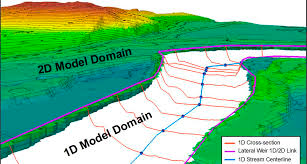

This leads to a decrease in the depth and a continuous change in the section of the river. The importance of knowing the value of Manning’s coefficient in the study reach becomes clear when you know that the study reach suffers from sedimentation bars due to the low water speed in the river due to the low discharges in this reach in most times of the year. The target of this study is to calibrate and estimate the value of Manning’s roughness coefficient ( n) in areach of Tigris River upstream of Amarh Barrage because there is no previous information about Manning’s n in this reach of Tigris River in addition to importance of the barrage in regulating discharges to Basrah province. Shamkhi and Attab also employed the HEC-RAS model to investigate and estimate the value of “ n” downstream of Kut Barrage in Wasit, Iraq. He considered the floods for the years 20 in the calibration and verification. Parhi used the HEC-RAS model to calibrate and validate the value of the roughness coefficient “ n” for Mahanadi River in Odisha (India). Then, he was noticed that Einstein and Bajorunas gave values closer to the exact than the others did. Abdul Hameed investigated four formulas to estimate Manning’s n (Manning, Bajorunas, Einstein, and Kennedy) at Falluja regulator on the Euphrates River in Iraq. presented a numerical method for estimating Manning’s coefficient in modelling of flow in shallow waters. They found that the roughness value was between 0.04 and 0.48. investigated the roughness value of the Parit Karjo channel in Malaysia using Manning's equation. determined a single Manning’s n value for the flow in open channel using optimization method they took the boundary conditions as constraints. Ī number of researchers suggested several methods for the determination of n. This change in n value depends on geometric, geomorphological, and hydraulic parameters of water current and river or channel beds. Due to changes in time and space in the value of the coefficient n, the determination of the coefficient n becomes a very complex problem. ĭetermination of “ n” value presents an influential and creative task in the hydraulics of open channel flows. Several empirical formulas for the estimation of the value of n in practical problems have been proposed in the past.

As an empirical parameter, the roughness coefficient (Manning’s n) includes the elements of roughness of channel surface, bed material, vegetation, channel alignment and irregularities, channel shape and size, stage and discharge, suspended sediment load and bed sediment loads, etc. Because of the complexities of hydraulic engineering, specific values for the empirical parameters, such as Manning’s coefficient n, are often uncertain. The physical parameters describe the physical properties of materials usually, they are constants while the empirical parameters are established on mathematical models. The parameters from models practiced in the engineering of hydraulics may be grouped into two groups: physical parameters and empirical parameters. Knowing Manning’s coefficient of roughness in open channels is of great importance in achieving any modelling that aims to study a variable of river variables such as flooding, sediment transport, and others. Among various hydraulic parameters, especially in hydraulic modelling, the roughness coefficient (or Manning’s coefficient) is an important parameter. In forecasting and warning of a flood, the river stage and discharge are considered as the variables. In predicting flood, the mapping and estimation of flood volume and various hydrodynamic models are developed and applied to several rivers with the aid of computers and numerical techniques. Results from this investigation showed that a value of Manning’s coefficient of 0.025 gave an acceptable agreement between observed and simulated values of water levels.

Graphical and statistical approaches were used for model calibration and verification. The HEC-RAS model was adopted, calibrated, and validated in adopting two sets of observed water levels.
#STARCRAFT REMASTERED YOUTUBE SOFTWARE#
HEC-RAS software was the simulation tool used in this study. This study submits the results of the proposition of a hydraulic model in order to determine the roughness coefficient (Manning’s coefficient n) of the Tigris River along 3.5 km within the Maysan Governorate, south of Iraq.

In understanding the hydraulic characteristics of river system flow, the hydraulic simulation models are essential tools.


 0 kommentar(er)
0 kommentar(er)
